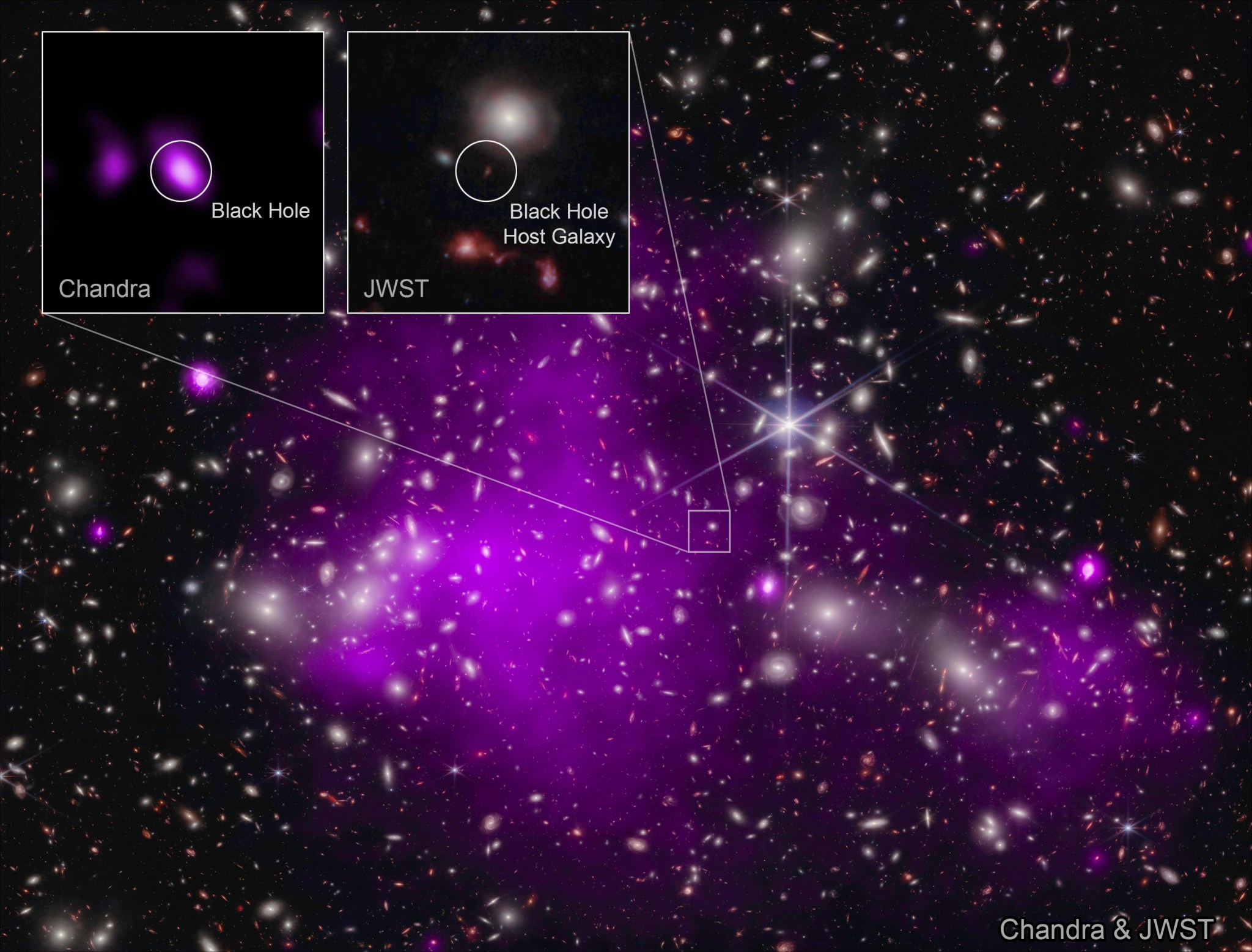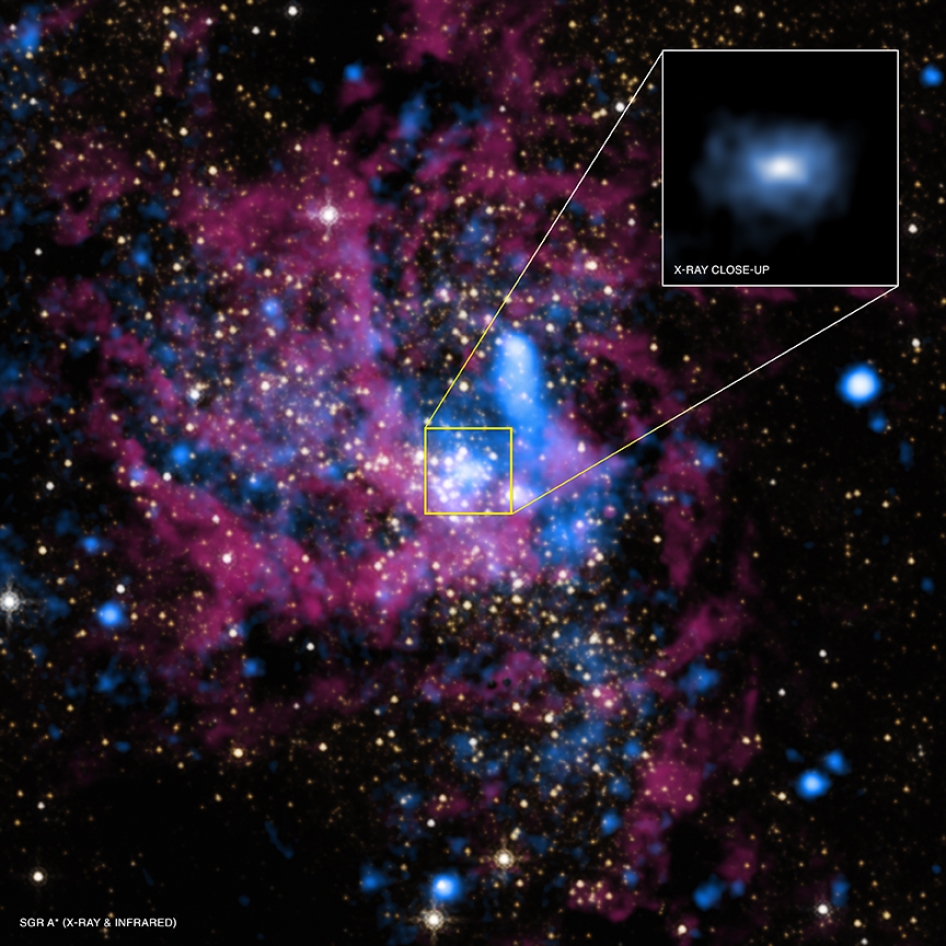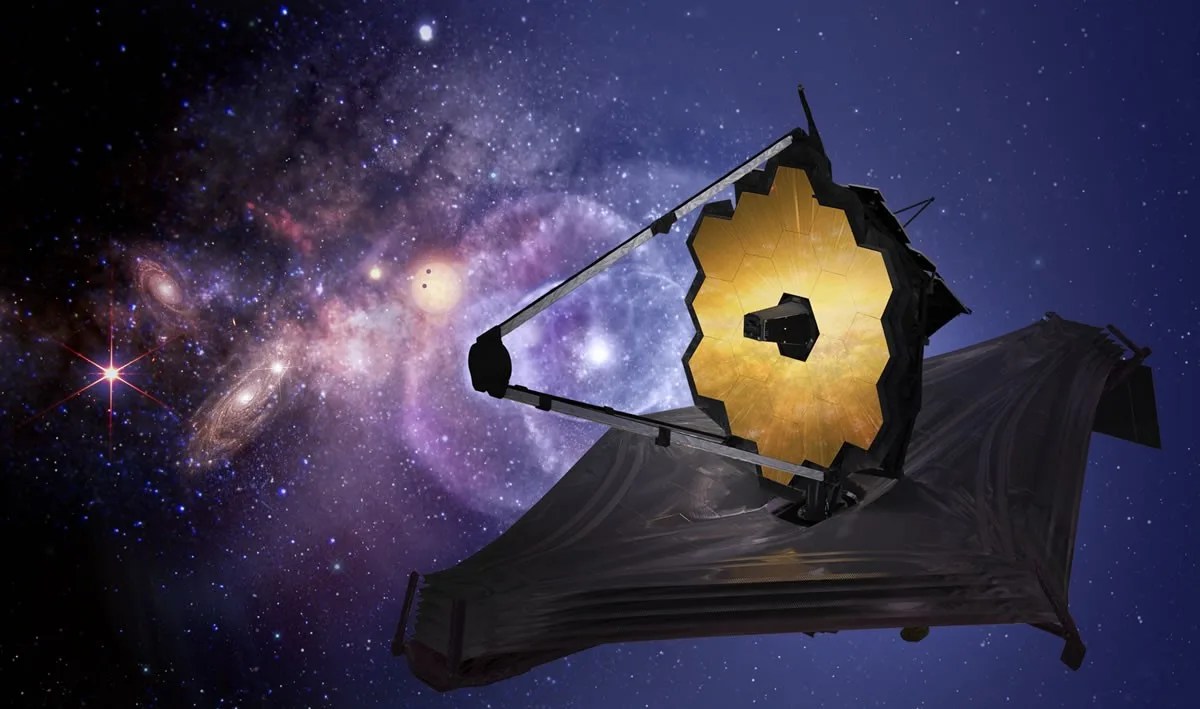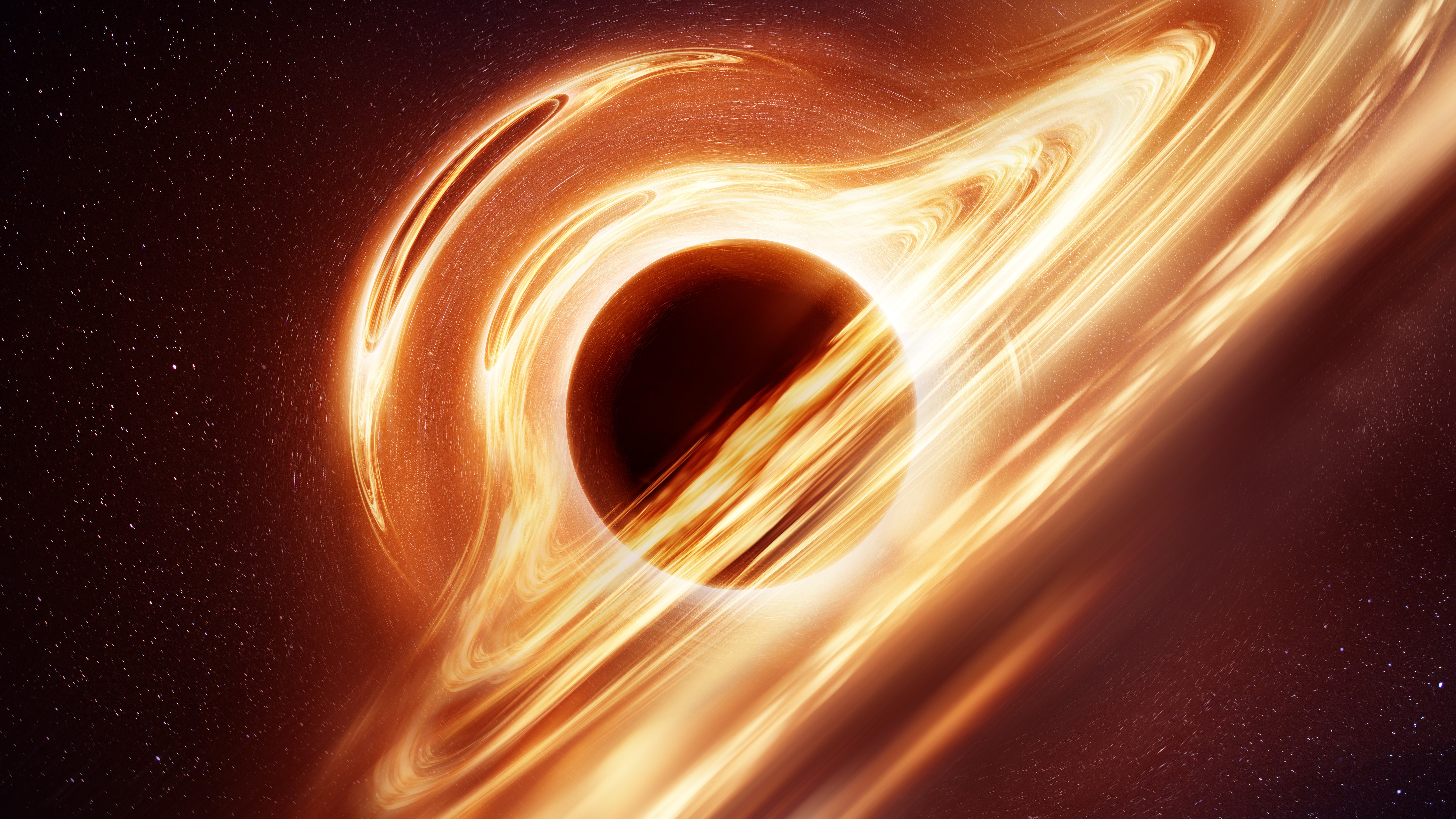Overview
Aided by NASA telescopes, astronomers unveiled a groundbreaking find: the most remote black hole ever detected in X-rays. This discovery is extraordinary because this black hole is at an early developmental stage, a previously unseen phenomenon. Interestingly, its mass aligns with that of its host galaxy.

This revelation carries significant implications, potentially offering insights into the origins of the earliest supermassive black holes in the cosmos. By harnessing data from NASA’s Chandra X-ray Observatory and the James Webb Space Telescope, a team of researchers managed to identify the distinct signature of a burgeoning black hole a mere 470 million years following the cataclysmic event of the Big Bang.
What are Black Holes?
According to NASA, a black hole is an area in space where gravity exerts a powerful pull so intense that not even light can escape. This gravitational force is powerful because much matter has been compressed into a minimal space. The formation of a black hole often occurs when a massive star reaches the end of its life cycle.

Due to the absence of light emission, black holes are inherently invisible to the naked eye. However, specialised space telescopes with unique instruments can detect and study black holes. These instruments are designed to observe the distinctive behaviour of stars close to black holes, which differs significantly from the behaviour of other stars. This enables scientists to identify the presence of these mysterious celestial objects.
More about the NASA’s Discovery of a Distant Black Hole
Black Hole Location and Galaxy
Astronomers led by Bogdan and his team found a distant black hole in the galaxy UHZ1 towards the cluster Abell 2744. The cluster is approximately 3.5 billion light-years away from Earth.
Data from the James Webb Space Telescope (Webb) revealed that the galaxy UHZ1 is significantly more distant than the cluster itself, positioned at 13.2 billion light-years from Earth, representing a time when the universe was only 3% of its present age.
The Observations
Over two weeks, NASA’s Chandra X-ray Observatory has provided valuable insights. The observations revealed intense X-ray-emitting gas within galaxy UHZ1, a signature of a growing supermassive black hole.

The phenomenon of gravitational lensing, caused by intervening matter in Abell 2744, amplifies the light from the galaxy and the X-rays emitted by the black hole’s surrounding gas, significantly enhancing the detection capabilities of Webb and Chandra.
Why is this discovery significant?
This discovery is pivotal in unravelling the enigma of early supermassive black hole growth. It prompts questions regarding their origins—do these black holes emerge from the direct collapse of massive gas clouds, giving rise to significant mass black holes, or do they result from the explosions of the universe’s first stars, forming comparatively smaller black holes?

Theoretical predictions made in 2017 by Priyamvada Natarajan from Yale University suggest an “Outsize Black Hole” theory, where black holes directly form from the collapse of massive gas clouds. The substantial mass of this newly discovered black hole, its intense X-ray emissions, and the galaxy’s brightness, as observed by Webb, align closely with this theory.
This groundbreaking discovery sheds light on distant cosmic phenomena. It deepens our understanding of the early universe and the mysterious birth of supermassive black holes.











